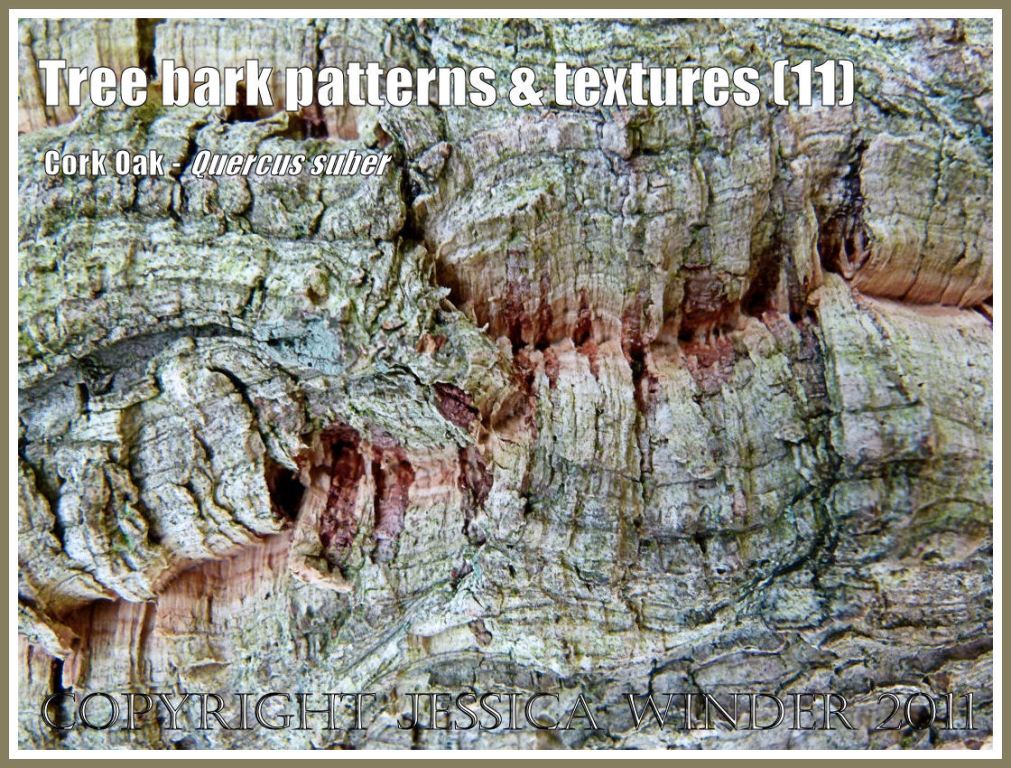The bark of the Stone Pine (Pinus pinea) and of the Cork Oak (Quercus suber) are featured here in Part 2 of the series of tree bark patterns and textures. The Stone Pine is a tree of Mediterranean origin with commercial use; for example, we get the pine nuts now found in all sorts of Italian style cuisine from this tree. Each of the pine cones each bear up to 100 seeds which drop out in hot weather or when there has been a fire. Resin which oozes from the thick bark has many applications in medicine as well as use in waterproofing, varnishing, waxing and paint solvent.
The bark of the Cork Oak is farmed. It is removed from the tree every 10 years and regenerates. The cork stripping operation can be carried out until the tree is about 200 years old. Cork has a myriad of uses. Traditionally made into stoppers for bottles and jars but frequently used for flooring, tiling, insulation and padding.
These photographs were taken at the Royal Botanic Gardens Kew in London, U.K. in the Mediterranean Garden.
COPYRIGHT JESSICA WINDER 2011
All Rights Reserved






